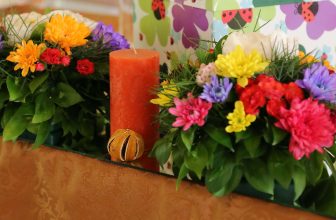How to Decorate a Pergola With Plants
A pergola is a beautiful structure that can add value to your home and enhance your outdoor living space. Adding plants to your pergola not only adds visual appeal but also provides shade, creates privacy, and attracts beneficial pollinators.
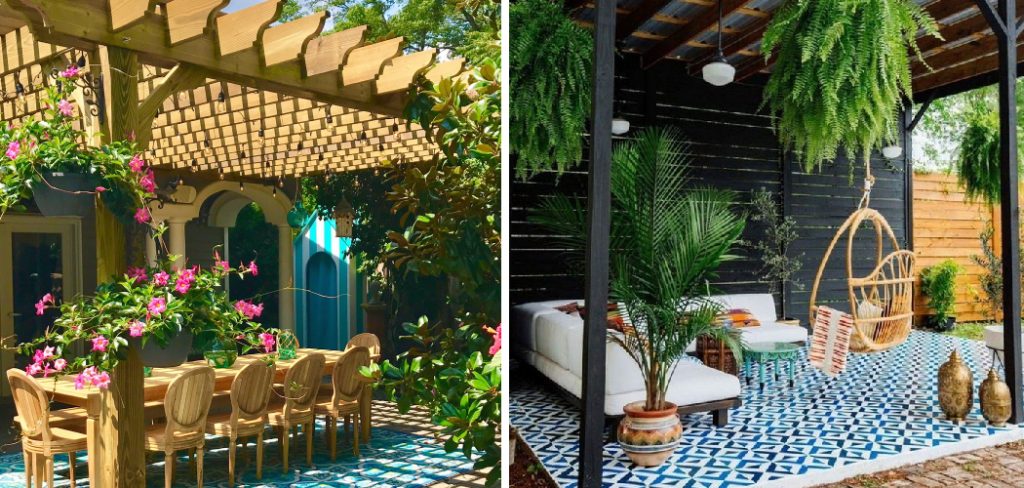
The main advantage of decorating a pergola with plants is the natural beauty that it brings to any outdoor space. Plants provide color, texture and character to an otherwise plain structure. Additionally, incorporating plants into your pergola design can also have practical benefits. You can find step-by-step instructions on how to decorate a pergola with plants in this blog article.
Types of Plants Are Best Suited for Decorating a Pergola
There are a wide variety of plants that can be used to decorate a pergola, depending on your personal preferences and the style of your outdoor space. Some popular options include:
1. Climbing Plants
These types of plants are ideal for covering the open sides or roof of a pergola. They add a touch of natural beauty and can provide shade and privacy. Some popular climbing plants for pergolas include:
- Wisteria
- Honeysuckle
- Clematis
2. Hanging Plants
These types of plants are perfect for adding a pop of color and texture to your pergola. They can be hung from the roof or sides using hooks or plant hangers. Some popular hanging plants for pergolas include:
- Petunias
- Geraniums
- Ivy
3. Potted Plants
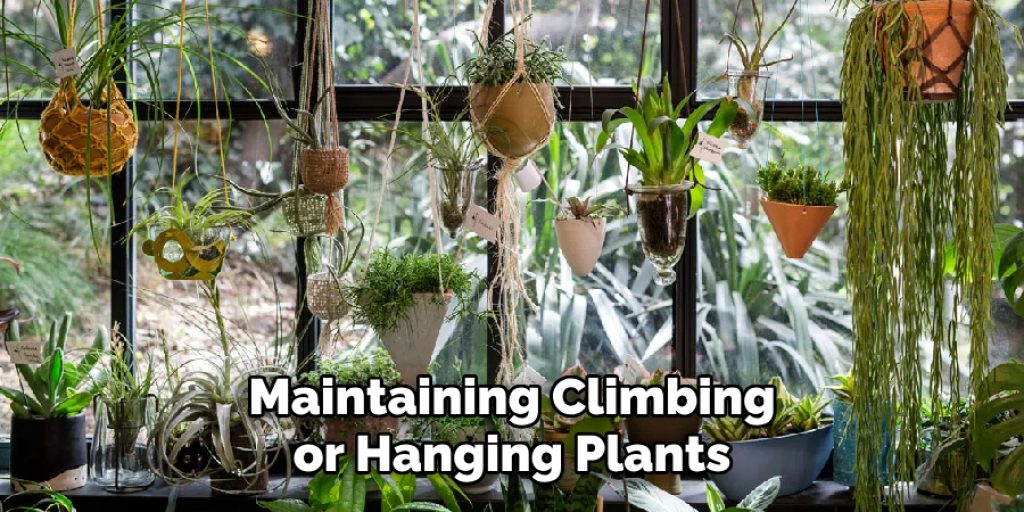
If you want to add some greenery and life to your pergola without the hassle of maintaining climbing or hanging plants, potted plants are a great option. They can be placed on the ground or hung from the roof using macrame hangers. Some popular potted plants for pergolas include:
- Succulents
- Ferns
- Herbs like rosemary or mint
4. Vines
These types of plants are similar to climbing plants, but they have a more delicate and flowing appearance. They can be trained to grow along the roof or sides of a pergola, adding a touch of elegance and whimsy. Some popular vine plants for pergolas include:
- Morning glory
- Trumpet vine
- Sweet pea
No matter which types of plants you choose for your pergola, it is important to consider the climate and conditions in your area. Some plants may require more sunlight or water than others, so be sure to do your research and choose plants that will thrive in your specific environment.
Step-by-step Instructions for How to Decorate a Pergola With Plants
Step 1: Inspect the Pergola

Before decorating your pergola with plants, make sure that it is sturdy and can support the weight of the plants. Check for any loose screws or parts that may need repair. When selecting plants to decorate your pergola, consider factors such as the climate, amount of sunlight, and maintenance required. Some popular choices include creeping vines, hanging plants, or potted flowers.
Step 2: Clean the Pergola
Clear any debris and dirt from the pergola. You can use a mild detergent and water to scrub away stains and grime if necessary. Decide where you want to place your plants on the pergola. Consider using a mix of hanging plants and potted plants to add variety.
Step 3: Prepare the Pots
If you are using potted plants, make sure they have proper drainage holes. You can also add a layer of gravel or rocks at the bottom for better drainage. For hanging plants, use hooks or brackets to secure them to the pergola. Make sure they are evenly spaced and at the desired height.
Step 4: Install Trellises
Trellises can help support climbing plants and add a touch of elegance to your pergola. Attach them securely to the sides or roof of the pergola. If you are using climbing plants, gently guide them towards the trellis or pergola structure. You can use ties or clips to help direct their growth.
Step 5: Add Lighting
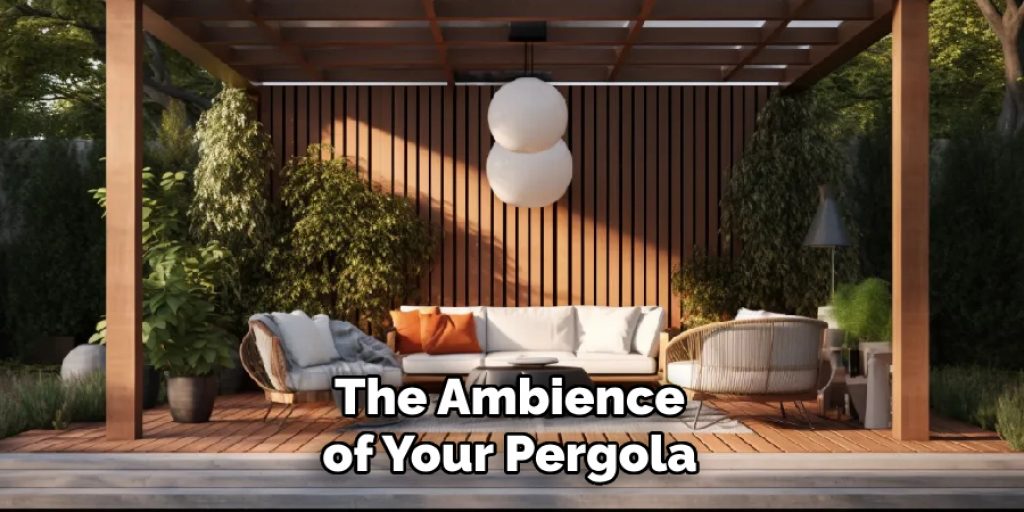
To enhance the ambience of your pergola, consider adding string lights or lanterns. These can be hung from the roof or wrapped around the pillars. Choose plants with scents that you enjoy, such as jasmine or roses. These will not only add beauty but also create a pleasant aroma in your outdoor space.
Step 6: Add Seating
To fully enjoy your decorated pergola, include comfortable seating options such as a bench or chairs. This will allow you to relax and admire your plant decorations. Keep an eye on your plants and make sure they are getting enough water and sunlight. Prune them when necessary and replace any dead or dying plants to keep your pergola looking its best.
By following these simple steps, you can transform your plain pergola into a vibrant and inviting outdoor space. Not only will it add beauty to your yard, but it will also provide a perfect spot for you to relax and enjoy the beauty of nature.
Safety Tips for How to Decorate a Pergola With Plants
- Check for Structural Integrity: Before decorating your pergola with plants, it’s important to ensure that the structure is stable and can support the weight of additional flora. Inspect the beams, posts, and joints for any signs of damage or weakness.
- Choose Appropriate Plants: Not all plants are suitable for growing on a pergola. Make sure to select plants that thrive in the conditions of your pergola, such as sun exposure and humidity levels.
- Avoid Invasive Species: It’s important to avoid planting invasive species on your pergola, as they can quickly overtake the structure and damage it. Do some research and choose non-invasive plant options instead.
- Consider the Weight of the Pots: If you plan on using potted plants on your pergola, be mindful of the weight they will add. Use lightweight pots or consider suspending them from the structure to avoid putting too much strain on it.
- Use Proper Attachments: When attaching plants to your pergola, make sure to use appropriate methods and materials. Avoid damaging the structure by drilling into it and opt for alternative options such as hooks, ties, or clips.
- Keep an Eye on Maintenance: Regularly check and maintain your plants to ensure they are not causing any damage to the pergola. Prune back overgrown foliage and remove any dead or dying plants.
- Consider Weather Conditions: Remember to take into account the weather conditions in your area when choosing plants for your pergola. Extreme temperatures, wind, and rain can all affect the growth and health of plants. Be prepared to make adjustments or bring plants indoors if necessary.

In addition to these safety tips, there are a few other things to keep in mind when decorating your pergola with plants.
Some Creative Ways to Incorporate Vines Into the Design of a Pergola
Vines are a beautiful and versatile addition to any outdoor space, and incorporating them into the design of a pergola can create a stunning and unique look. Here are some creative ideas for using vines in your own pergola design:
- Create a Natural Roof: Instead of traditional roofing materials like wood or metal, consider using vines to create a natural roof for your pergola. This will not only add a charming and rustic look to your outdoor space, but it can also provide additional shade and protection from the sun.
- Use Hanging Baskets: If your pergola has beams or rafters, you can hang baskets filled with vine plants from them. This will give the illusion of a green ceiling while adding texture and depth to your pergola’s design.
- Weave Vines into the Structure: Instead of simply draping vines over the top of your pergola, try weaving them through the structure itself. This will create a more cohesive and integrated look, as if the vines are growing organically within the pergola.
- Add Lighting Effects: When incorporating vines into your pergola design, consider adding some lighting effects to enhance their beauty. Twinkle lights or lanterns nestled within the vines can create a magical and enchanting atmosphere in your outdoor space.
- Mix Different Vines: Don’t limit yourself to just one type of vine – mixing different varieties can add dimension and interest to your pergola design. Choose vines with varying leaf shapes and colors for a truly unique and visually appealing look.
- Create a Private Nook: Vines can also be used to create a private and secluded area within your pergola. By strategically placing vines around the sides of your pergola, you can create a cozy nook for reading, relaxing, or enjoying some alone time.
- Use Vines as Natural Curtains: For a more whimsical and romantic look, use vines as natural curtains for your pergola. You can train them to grow along the sides of your pergola and drape down like cascading curtains, providing privacy while still allowing airflow.
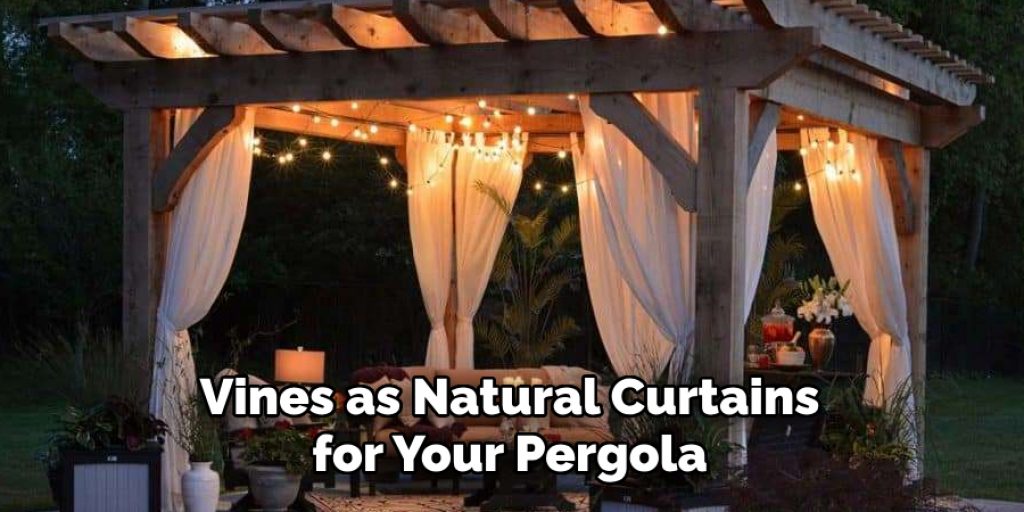
As you can see, there are countless ways to incorporate vines into the design of a pergola. Get creative and have fun experimenting with different techniques to create a truly unique and stunning outdoor space. Whether you want a natural and rustic feel or a more elegant and romantic look, vines are the perfect addition to any pergola design.
Are There Any Specific Maintenance Tasks Required for Plant Decorations on a Pergola?
There are several maintenance tasks that should be regularly performed to keep the plant decorations on your pergola looking healthy and vibrant. These tasks will not only maintain the aesthetic appeal of your outdoor space, but also ensure the health and longevity of your plants.
- Pruning: Regular pruning is essential for maintaining the shape and size of your plants. It also helps to remove any dead or damaged branches, allowing for new growth to occur. Prune your plants according to their specific pruning needs and be sure to use the appropriate tools.
- Watering: Proper watering is crucial for the health of your plants. Be sure to water them regularly, especially during hot and dry weather. However, avoid overwatering as it can lead to root rot and other issues.
- Fertilizing: Adding fertilizer to your plants can provide them with the necessary nutrients for healthy growth. Be sure to use a balanced fertilizer and follow the recommended dosage for your specific plants.
- Pest Control: Keep an eye out for any pests that may be damaging your plants, such as aphids or spider mites. Use natural methods of pest control, such as introducing beneficial insects or using non-toxic sprays.
- Cleaning: Regularly clean your pergola and plants to remove any dirt, dust, or debris that may have accumulated. This will not only improve the appearance of your outdoor space, but also prevent any potential pest or disease issues.

In addition to these maintenance tasks, it is also important to regularly inspect your plants for any signs of disease or stress. If you notice any discoloration, wilting, or other abnormalities, take action immediately to prevent further damage.
Special Considerations for Planting in Containers on a Pergola
When it comes to planting containers on a pergola, there are some special considerations to keep in mind. Here are a few tips to ensure successful container gardening on your pergola.
- Choose the Right Containers: Since your pergola will be exposed to natural elements like rain and sun, it’s important to choose containers that can withstand these conditions. Look for durable materials like concrete, terracotta or metal. Avoid plastic containers as they can easily become damaged by the elements and may not provide enough stability for your plants.
- Consider Weight Restrictions: Pergolas are typically built to support only a certain amount of weight, so it’s important to keep this in mind when choosing containers and plants. Opt for lightweight materials like fiberglass or foam instead of heavy materials like stone or concrete. Additionally, avoid filling your containers with too much soil as it can add unnecessary weight.
- Watering: With containers on a pergola, there may be limited access to water and drainage. Make sure to choose plants that can tolerate drier conditions and monitor them closely for signs of dehydration. Consider installing a drip irrigation system or using self-watering containers to make watering easier.
- Plant Selection: When choosing plants for your pergola, consider their growth habits and how they will interact with the structure. Vines are a popular choice for pergolas, but keep in mind that they may require regular pruning and maintenance to prevent damage to the structure. Consider using hanging baskets or tall, narrow containers to save space and avoid overcrowding.
- Maintenance: Pergolas may require regular maintenance, especially if they are exposed to natural elements. Make sure to regularly check for any signs of wear or damage and make necessary repairs as needed. This includes checking the integrity of your containers and ensuring they are properly secured to the structure.
- Consider Climate: Depending on where you live, you may need to take into account your local climate when choosing plants for your pergola. Consider heat and cold tolerance, as well as the amount of sunlight your pergola receives throughout the day. This will help you choose plants that will thrive in your specific environment.
By keeping these tips in mind, you can create a beautiful and functional garden on your pergola. Just remember to regularly monitor your plants and containers for any signs of stress or damage, and make adjustments as needed. With the right planning and care, your pergola can become a stunning oasis full of thriving plants.
What Are Some Alternative Ways to Add Greenery to a Pergola Besides Traditional Potted Plants?
In addition to traditional potted plants, there are many alternative ways to add greenery to a pergola. Here are some ideas to consider:
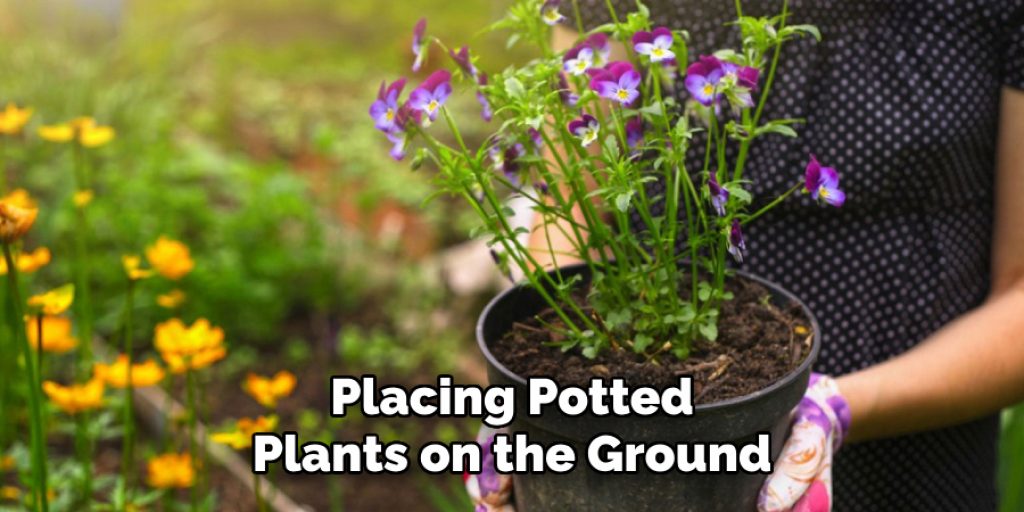
- Hanging Planters – Instead of placing potted plants on the ground or on shelves, try hanging planters from your pergola’s beams. This not only adds a unique touch to your pergola but also allows for more space on the ground for other decorations or seating.
- Trellises – Adding trellises to your pergola allows for climbing plants like ivy or jasmine to grow and cover the beams, providing a natural and lush look. You can also add hanging planters to the trellis for even more greenery.
- Vertical Gardens – If you have limited space or want to maximize the amount of greenery in your pergola, consider creating a vertical garden using wall-mounted planters. This is a great option for urban spaces or smaller pergolas.
- Hanging Baskets – Similar to hanging planters, you can also hang baskets filled with trailing plants like ferns, spider plants, or even herbs from your pergola. This adds a whimsical touch while still adding greenery to your space.
- Espaliered Trees – If you have a larger pergola, consider planting espaliered fruit trees along the sides or above the beams. This not only adds greenery but also provides delicious fruits for you to enjoy.
- Vines and Climbing Plants – Vines and climbing plants, such as wisteria or honeysuckle, can be trained to grow up the sides of your pergola for a beautiful and natural look. Just make sure to research which plants are best suited for your climate and pergola structure.
- Artificial Greenery – For those who don’t have a green thumb or prefer low-maintenance options, artificial greenery can be a great alternative. There are many realistic and high-quality artificial plants and flowers available that can add a pop of green to your pergola.

Overall, there are plenty of creative ways to add greenery to your pergola besides traditional potted plants. Explore different options and choose what works best for your space and personal style. With some greenery added, your pergola will become even more inviting and enjoyable.
Conclusion
In conclusion, decorating a pergola with plants is an excellent way to add natural beauty and charm to this outdoor space. It not only adds visual interest but also creates a cozy, inviting atmosphere where you can relax and unwind. There are several different ways you can incorporate plants into your pergola design. You could use hanging planters or trellises along the sides of the structure, or place potted plants on the ground or on top of the pergola’s beams.
It all depends on your personal preferences and the type of plants you want to use. When choosing plants for your pergola, consider both their aesthetic appeal and practicality. Opt for low-maintenance plants that can withstand outdoor conditions, such as climbing vines, succulents, or hardy perennials.
You may also want to consider using fragrant plants, such as jasmine or honeysuckle, to add a pleasant aroma to your pergola. I hope reading this post has helped you learn how to decorate a pergola with plants. Make sure the safety precautions are carried out in the order listed.




